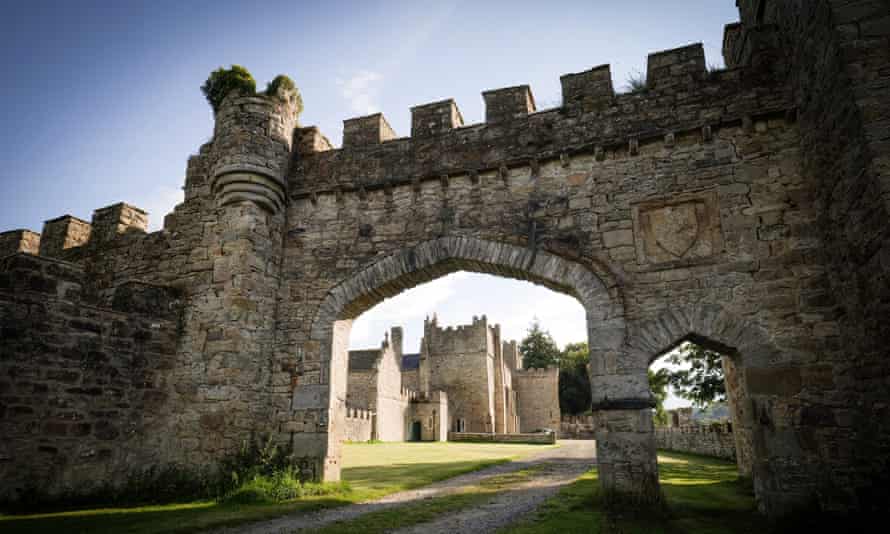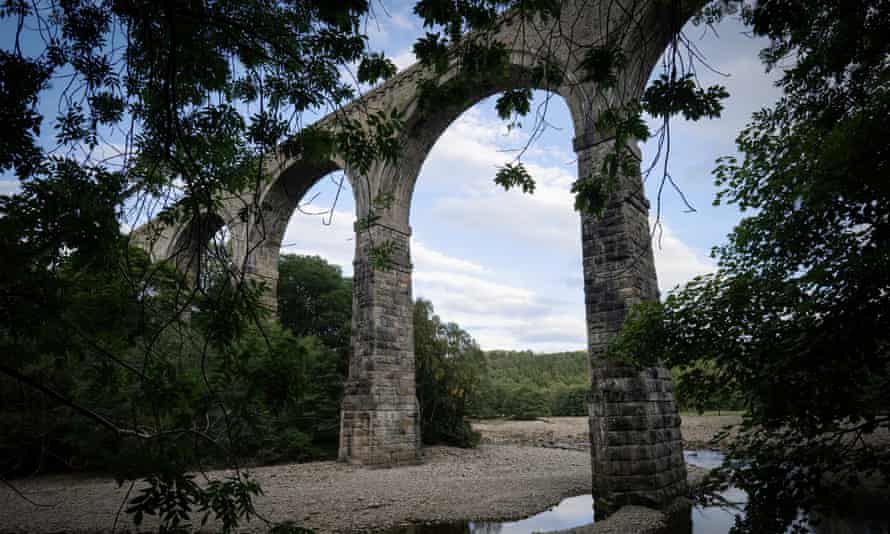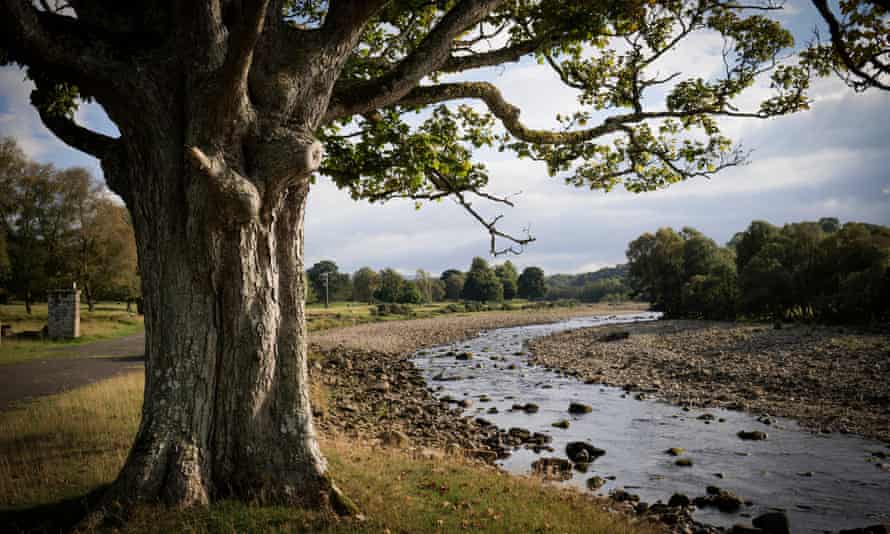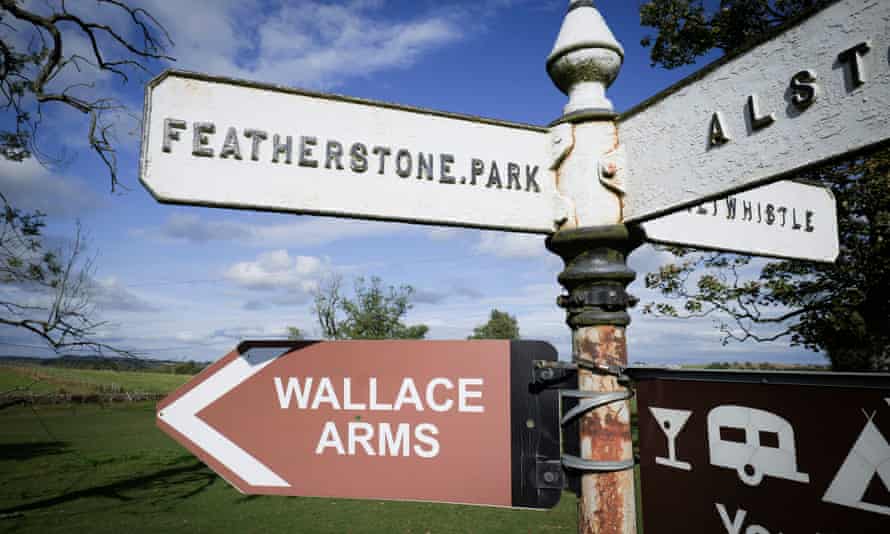Start The Wallace Arms, Rowfoot, Haltwhistle
Distance 4½ miles
Time 3½ hours
Elevation gain 215 metres
Difficulty Moderate and potentially muddy
The connection between William Wallace and Tynedale is as gory as a Sam Peckinpah movie. In 1297, Braveheart and his warriors tore through the Tyne Gap, ransacked churches, razed three priories and, in Hexham, burned a class of schoolboys alive (proof, if any more were needed, that you should never trust Mel Gibson). That the locals chose to name a pub after this bloody villain is proof of the grisly streak that runs through the Northumbrian sense of humour and the historic love of a good scrap.
Google map of the route
Allow Google content?
This article includes content provided by Google. We ask for your permission before anything is loaded, as they may be using cookies and other technologies. To view this content, click ‘Allow and continue’.
It’s hard to imagine now – the only sound to be heard above the rushing waters of the South Tyne is a semi-hysterical piping from one of England’s largest inland colonies of oystercatchers – but this was once one of Europe’s most dangerous regions. South Tynedale was populated by murderous clans (high among them the Ridleys and the Fenwicks) who were “reavers”, living by theft and intimidation, and gave the English language the word “bereaved”.
The ornate Jacobean manor and sturdy defensive pele tower of Featherstone Castle date from those lawless days. It’s a source of bloody legend. The heinous murder of one owner, Sir Albany Featherstonehaugh, by a gang of local miscreants features in Sir Walter Scott’s Marmion (though the “traditional” ballad verses describing the dastardly deed at the Deadmanshaw were actually a spoof concocted by County Durham wag RS Surtees). And the wholesale slaughter of a Featherstonehaugh wedding party by the Ridleys of nearby Hardriding has led to tales of spectral guests wandering the Tyne’s banks on the anniversary of the nuptials that never were. Nonsense, of course, though on a quiet day in spring, when the sky is darkening and you are pattering along the edge of the dripping deciduous Hag Wood, the ghostly white glow of wild garlic and wood anemones, the screech of a jay and the rattle of branches might momentarily convince you otherwise.

Close by the castle, on the riverbank, are reminders of more recent battles. Featherstone Camp was originally built to house US troops arriving in the UK for the Normandy invasion, but by 1945 it was one of the country’s biggest prisoner of war camps, holding 4,000 captured German officers. The camp had three orchestras, a theatre, a bakery, a football league and its own newspaper, Die Zeit Am Tyne.
An old neighbour of mine used to drive a bus that took the prisoners to work on nearby farms. “Most of them seemed canny lads, but there were a couple that were right Nazis,” he recalled. In 1945 eight prisoners cut through the barbed wire and escaped. They planned to hijack a plane and fly back to Berlin. One, Karl Kropp, drowned trying to cross the river; the others got as far as Alston before they were captured by a local copper. The camp closed down in 1948 when the remaining prisoners, having been “re-educated” – for some of them were indeed “right Nazis” – were repatriated. A couple of brick buildings and the Nissan huts’ foundations are all that remain beneath the lime trees.
There’s a reminder of a more peaceful past when the path takes you along the embankment of the former North Eastern Railways branch line, past the old station at Coanwood to Lambley Viaduct, a joyful piece of Victorian engineering.
Built in 1852, it’s 260 metres long and stands 30 metres above the rippling waters of the South Tyne. The man who designed it was geordie engineer George Barclay Bruce, a protege of Robert Stephenson. He’d go on to build railways in more exotic locations, among them the Grand National Tramway in Buenos Aires.

The viaduct once carried the line that linked Alston to Haltwhistle. For decades heavy goods trains filled with the product of the North Pennine lead and zinc mines – once among the most productive on the planet – rumbled across its single track (the reed beds along the river are part of a scheme to tackle the pollutants that still spill from the abandoned shafts). The passenger line survived the Beeching cuts largely because the local roads were too narrow, steep and rough for buses and trucks. It was eventually shut in 1976, though the Alston to Slaggyford section still runs as a heritage railway.
Quick Guide
Saturday magazine
Show

This article comes from Saturday, the new print magazine from the Guardian which combines the best features, culture, lifestyle and travel writing in one beautiful package. Available now in the UK and ROI.
Crossing the viaduct there is a detour to the tiny village of Lambley, where the only remnant of the Benedictine priory sacked by Wallace is the bell hanging in the village church (the ruins were swept away in a flood in the 1700s).

A steep, stepped path down to the west bank of the South Tyne leads to a stable, modern footbridge (the original was mounted on ropes and had a whiff of peril and Indiana Jones about it). From here you get a dizzying view up at the nine great arches of Bruce’s masterpiece. The river – sherry-coloured from upland peat – swirls around the vast grey, stone feet. Upstream are wide gravel beaches fringed by trees: it’s a popular spot for fly-fishing and also the more adventurous (or perhaps foolhardy) wild swimmer. From mid-June salmon can be seen leaping up past Featherstone weir, or picking their way gingerly through the shallows – their dorsal fins poking above the water.
If you’re particularly lucky, you might see the iridescent blue streak of a kingfisher, or an otter may pop its head up and survey you before disappearing below the surface, leaving a necklace of bubbles.
The pub

The Wallace Arms is a warm corner of Northumbrian rural life. In summer you may hear the chink of steel quoits from the other side of the car park (the pub’s first team play in division two of the prestigious Allen Valley Quoits League). The small two-room bar has open fires and, if it’s not a folk night, the only soundtrack is the back-and-forth of locals talking about sheep prices and Strictly. There are usually three local ales from the likes of Hadrian and Border, Hexhamshire and Allendale on hand pump. Food is limited to crisps, but you can bring your own and eat it in the bar, and on Friday nights they send out for fish and chips from nearby Haltwhistle. On Facebook
Where to stay
About a mile and a half from the Wallace Arms, on the west side of the South Tyne, on the fell above the blink-and-you-miss-it hamlet of Kellah, Kellah Farm is a working hill farm run by the Teasdale family. It has four smart bedrooms in what was, until the 19th century, a pub called the Pitman’s Arms. Kellah Farm is in a dark sky area and the only sound you’ll hear at night is the hooting of owls. It also has three self-catering cottages, that sleep two, four or six people.
Doubles from £74 B&B, kellah.co.uk




